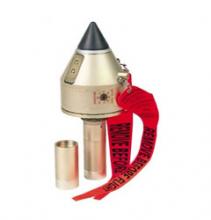

Nofi wrote in Victory at Sea: World War II in the Pacific:Ī Japanese torpedo bomber is destroyed by a 5-inch shell from USS Yorktown (CV 10) off Kwajalein atoll. Two rounds were fired and the first victim of the Proximity Fuze burst into flames and crashed into the sea.”Īs James F. “On 5 January 1943,” wrote Parsons, “four dive bombers attacked the task force (then near Guadalcanal). The first combat test of the proximity fuze proved that the efforts of Section T/APL were worth the time and expense that had gone into the project. Personnel aboard all three ships were trained and indoctrinated in the potential of the new weapon.

The shells were divided among the carriers USS Enterprise and USS Saratoga and the cruiser USS Helena, all of the Third Fleet. Parsons, who later fuzed the first atomic bomb aboard Enola Gay, during their shipment to New Caledonia, where Parsons reported to Adm. As production ramped up, the first 5,000 proximity fuzed shells were shepherded by then-Cmdr. The Combined Chiefs of Staff decided that the first use of the fuze would be in the South Pacific, where Japanese aircraft were causing heavy losses in ships and personnel and the need was greatest. One reason for the order of priority was that naval forces firing the proximity fuzed projectiles at sea stood a very low risk of the fuzes falling into enemy hands, as duds would fall into the ocean depths. Navy had assigned the highest priority to developing the weapon, which was often called the Variable Time (VT) fuze, the Radio Proximity Fuze, or Proximity Fuze, but was more popularly referred to, at least by sailors throughout the Navy, as the “funny fuze.” By spring 1941, it was also decided that the Navy had the greatest need for the completed proximity-fuzed anti-aircraft shells, with the Royal Navy next in line, followed by the U.S.
#Proximity fuze series#
Naval History and Heritage Command photoĪfter making the “impossible” a reality and going through development of test and prototype fuzes, Section T/APL helped set up series production, maintained quality control through troubleshooting and plant inspections (shutting several down when the components were not of suitable quality) and traveled to the various fronts during the war to train personnel in the use of the new weapon. The USS Helena was among the first ships to test the “funny fuze.” U.S. This image has been retouched to remove radar antennas from the gun directors and masts. The USS Helena (CL 50) at a South Pacific base, between battles, circa 1943.


 0 kommentar(er)
0 kommentar(er)
